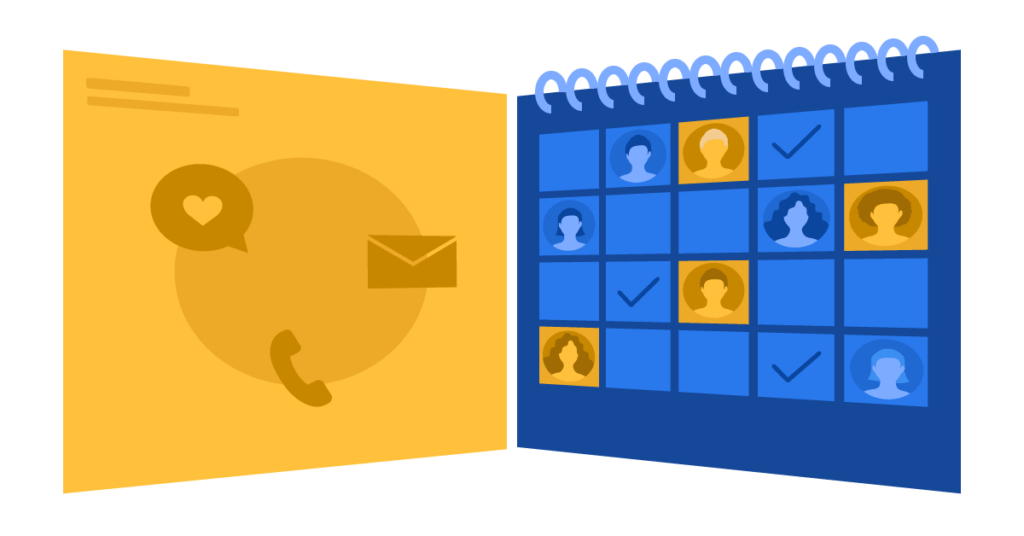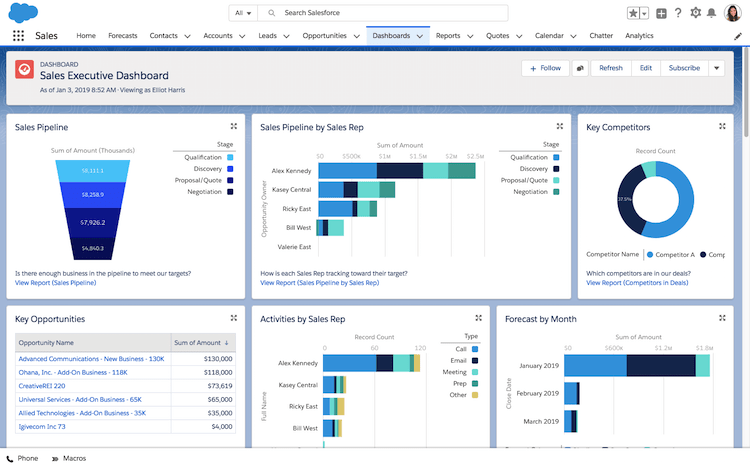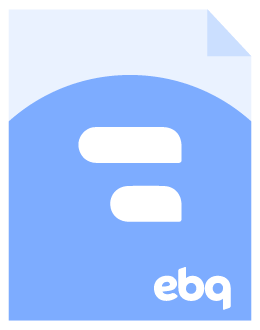7 Best Lead Generation Strategies for Small Businesses


Stuart Bontrager
This post was originally published in February 2019 and has been updated for accuracy and comprehensiveness.
In order for any B2B startup to determine a lead generation process that works for their unique business model, they all must first address the challenge of creating a scalable approach for what frequently is an entirely new conception of how businesses function. Why does it pose a problem to B2B startups in particular? The number of decision-makers involved in making purchases and the typical length of sales cycles are the most common obstacles to devising a cohesive lead-generation strategy.
Not sure where your current process stands? Your lead generation process likely requires additional optimization if you frequently experience:
- Not enough leads to go around for your salespeople
- An excess of clearly unqualified leads
- Low conversion rates (prospects aren’t taking the desired action necessary for conversion)
Once these lead generation optimization issues are sufficiently addressed, your sales team will begin to see enough leads to go around, those leads will be much better qualified than previous ones, and because those leads are better qualified, they’re far more likely to generate more revenue from future sales.
It makes no difference whether you’re an established B2B enterprise looking to improve your current process or just a young startup trying to get your footing – optimization always starts with overcoming the initial challenge of getting all stakeholders to agree on a single lead generation strategy, and addressing outstanding issues in their current lead generation process to make paving the way for further optimization less of a challenge moving forward.

Download the Ultimate B2B Appointment Setting Guide
Learn what it takes to identify prospects, get in touch with decision-makers, and set more meetings for your sales reps.
Use tools that optimize processes essential to lead generation
If you’re looking to really accelerate your lead generation efforts, having the right sales enablement tools at your disposal is essential. There are a variety of options to choose from, so B2B startup decision-makers will have to determine which option makes prospect information more accessible and makes day-to-day operations more scalable based on their goals and current resources and infrastructure.
This kind of automation technology provides your reps with the ability to multitask on a number of crucial things. Most importantly, it allows your reps to communicate with a multitude of prospects all at once throughout every single stage of all of their unique, individual buying journeys. When your team is able to carry on conversations with multiple prospects, your team will have more bandwidth to pursue more leads and ultimately close more deals.
With the right automation tools, you and your team can:
- Improve the lead-gathering process through optimization
- Get helpful prospect information before speaking with them
- Track prospects’ level of interest or readiness to buy more accurately
- Identify key trends by analyzing prospect journeys through your pipeline
That said, we know it can still be difficult to discern what tools are just the right fit for delivering the best leads and data to your company. If you need some help getting started in your search, take a look at the top prospecting tools we use and vouch for.
Use a CRM to more easily manage prospects and customers
Managing your prospects and customers is just as important as capturing their business. As such, having customer relationship management (CRM) software to manage potential and current customers is essential. We would go so far as to say it’s arguably the most essential component of any sales technology stack.
Regardless of where your company is in its startup journey, using a CRM platform to accurately track prospects’ progress and notate each interaction is crucial for extended, high-touch, highly-involved sales cycles typical of B2B startups. With all of this prospect information stored in one place, every user has a consistent “source of truth” of any given prospect as they move closer to a potential purchase decision.
Right now, there’s no shortage of affordable beginner CRM tools on the market. So how do you make the right selection for your business? We recommend that any B2B startup strongly focused on scaling their operations should invest in a higher-quality platform that can grow sustainably with them and continue to meet their needs.
Salesforce continues to be the industry gold standard of CRM platforms. Its popularity is a result of its unprecedented flexibility that allows for more integration, customization, and innovation opportunities than any other platform.

In your ongoing search for the right CRM and other optimization tools for your sales process, be sure to remember that automation will never be a complete substitute for the human elements of B2B sales. Even as your team connects with hundreds of prospects at once, each and every one of them still expects a real person on the other end of the phone.

Subscribe to EBQ's Bimonthly Newsletter

Subscribe to EBQ's Bimonthly Newsletter
Work to identify and specify the “right” personas
Once you’ve decided on which CRM or other automation tools best align with your business goals, the next step in creating more optimized lead generation processes and an improved lead generation strategy is thoroughly defining and developing your buyer personas.
It’s considered an industry best practice to first narrow down your focus to a highly specific buyer persona in order to generate more precise and persuasive messaging uniquely tailored to that persona.
Essential details you will want to know about your ideal buyers:
- What industry they’re in
- Their official title(s) within the business
- Their level of decision-making authority
- Their biggest pain points
- The size of their business
- Their current available budget
If you find yourself still struggling to develop the right personas to target for your enterprise, don’t lose hope. Creating a bespoke approach to an incredibly specific persona is an ongoing process of trial and error for even the most mature B2B companies. Tweaking the details of your personas so that they’re just right requires a considerable amount of research and testing – especially among startups.

Optimizing your database for relevancy generates more relevant leads
After you’ve thoroughly defined the details of your buyer persona, make sure your database is optimized for relevance – targeting only the most relevant accounts, contacts, and information. To ensure the leads you generate are well-suited for your offering, you can manually prospect them through platforms like LinkedIn based on what essential details they provide.
If you decide that paying for a lead generation service is right for your business, we suggest you choose a firm that has a thorough understanding of your ideal buyer persona, your goals, and is capable of functioning as a collaborative partner to continuously improve your strategy. Many such firms prioritize a quantity of leads over their quality but no firm worth its salt will make you choose one at the expense of the other.
Seek complete alignment between your sales and marketing efforts
While a clearly defined buyer persona and robust prospecting capabilities certainly go a long way, they should never be your only form of lead generation. Marketing is another important, often untapped channel for generating leads. Your company’s marketing efforts should be wholly focused on generating awareness among your ideal buyers, then, ideally, nurturing them to the consideration stage or even the decision stages of the B2B buyer’s journey.

When your sales and marketing team’s understanding of your ideal buyer persona, messaging, and goals is in perfect alignment, more inbound leads are sure to follow.
In their 2023 State of Sales survey, Salesforce found that 73% of all sales teams reported that alignment between sales and marketing was “absolutely critical or very important to their overall sales process.”
How can this level of alignment be achieved? Start by establishing a reliable two-way system of communication between teams. Another way to help sales and marketing teams speak clearly and effectively to one another is by using marketing automation to evaluate and score leads through their interactions with your brand and content.
At EBQ, we use Marketing Cloud Account Engagement (formerly Pardot) for marketing automation. It integrates easily with our CRM and automatically sends new leads to our reps after they pass an established score threshold configured to give them a marketing-qualified designation.
Qualify your leads with an expert team of sales development reps
We all know the process of converting cold and inbound leads into sales-qualified prospects can be as difficult as it is time-consuming. If you’re looking to improve and optimize this stage of your sales funnel, we recommend building a specialized team of expert sales development reps (SDRs).
In long sales cycles typical of B2B startups, SDRs help save valuable time that salespeople would otherwise spend prospecting and cold calling. As such, SDR teams have the potential to be one of the greatest assets to your sales process, considering:
- Salespeople today spend only 34% of their time actually selling, according to the Salesforce State of Sales report.
- Forty percent of salespeople consider prospecting to be the most challenging part of the sales process.
Because the primary functions of an SDR are to qualify leads and set sales appointments, they can take the time required to motivate leads to move further along in their buyer’s journey. SDRs are also responsible for asking discovery questions during the qualification process, notating important prospect information that sales teams can use as leverage to address the prospect’s unique pain points during nurturing.
Reaching this level of specialization with your sales team can be especially useful for young startups with small sales teams or whose CEO doubles as the lone salesperson. For example, financial tech startup Coviance had just one SDR as the starting point for hiring and growing a new, thriving sales team and process.

Coviance x EBQ
Through the partnership, Coviance learned processes and practices to build a fully-functional internal sales engine.
As your business scales and quotas increase, salespeople will have less and less time to spend on unqualified leads as a result – and they generally won’t make the number of touches required for cold calling and qualification anyway.
Luckily, this is where SDRs come in. Because they’re tasked with facilitating this early phase of the sales cycle, SDRs can reach the necessary call cadence (typically at least 3-4 touches) to cold call and prepare leads for a sales conversation.
Providing your closers with more sales appointments with well-vetted, qualified leads is the best possible thing you can do for your sales process, and adding sales development reps to your team is the best way to make that happen.
If you’re interested in learning more about appointment setting and how it can help maximize sales opportunities, take a look at our free Ultimate Guide to B2B Appointment Setting.
Research and validate your market extensively
If you don’t know by now, you will soon discover that the process of determining your ideal buyer persona takes a considerable amount of research and can require developing multiple iterations of your ideal buyer persona before landing on the finished product. This is especially true for startups with a highly complex, specific B2B persona. Through our work with hundreds of clients across a diverse range of industries, we’ve found that SDR outreach is a consistently viable method for validating the markets you intend to pursue.
An additional benefit of using SDRs in the early stages of the buying cycle is the wealth of useful prospect information they collect that can be analyzed to reveal trends and insights into prospects who fulfill the requirements of your ideal buyer persona. This new information can then be used to further improve upon your sales and marketing messaging – eventually tweaking it to fit your ideal buyer persona to a tee.
If you discover that far too many cold and inbound leads in your database actively show no interest in or no need for your offering, you may want to consider reevaluating and refining your buyer persona.
Also, if the messaging your marketing team or SDRs are communicating to leads isn’t resonating or matching their expectations, take some time to revisit the messaging you’re using throughout your efforts for continuous improvement.
Before any attempt to scale, B2B startups need to test their offering in the market. Once you get market validation that confirms you’re saying the right things to the right people, it’s far more likely that your business will be able to capture the opportunities required for further growth.
Establish a well-defined lead qualification process
As a basic rule, your sales processes should be well-defined and easily repeatable. This includes the day-to-day processes your SDRs are trained to perform.
Outlining a suitable lead qualification process is imperative, as it determines whether prospects are interested or if they even have a need for your offering at all.
When your steps for qualifying leads are well-defined and explicitly laid out, your SDRs will be more likely to master their duties and perform more effectively.
It’s also important to develop a feedback loop between sales teams, so your managers, closers, and SDRs can work collaboratively to improve daily processes. With this level of communication and alignment across teams, SDRs and salespeople should both have a consistent view of leads as they progress to being considered sales-qualified.
When it comes to rating leads, leave the antiquated cold vs. warm rating system behind and adopt a customized lead rating system that aligns with your goals and your buyers’ motivations so all of your reps stay on the same page.
An incremental lead rating system helps your SDRs and salespeople determine the level of interest among your leads, where they are in the sales cycle, and what your next steps should be. Here’s an example of a custom rating system, the EBQ Rating system we use at EBQ.


Download the Ultimate B2B Appointment Setting Guide
Learn what it takes to identify prospects, get in touch with decision-makers, and set more meetings for your sales reps.
Lead Generation Strategy Isn’t One-Size-Fits-All
It goes without saying, but across a variety of industries and enterprises that all have their own unique goals, there is never a one-size-fits-all solution for generating more leads.
What works for one B2B startup won’t necessarily work for another. Your recipe for optimizing lead generation and your sales funnel depends largely on what you’re offering and who you are offering it to. Even so, the basic ingredients for most B2B startups are relatively the same:
- Established procedures for generating and qualifying leads consistently
- A suite of tools to optimize critical processes and scale tasks sustainably
- Highly specific descriptions of ideal buyer personas verified through market validation
- A sales team specifically comprised of SDRs and closers, which allows them to work more efficiently and competently
- Providing a seamless prospect experience through complete alignment and cohesion across your marketing, SDR, and sales teams.
When you take all these ingredients into account, optimization of your lead generation process and, by extension, your sales pipeline can be attained with an in-depth understanding of your buyers and the unique value you can provide them. Discovering the just-right lead-generation process for your business will help you make the most of every potential opportunity that enters your funnel.

